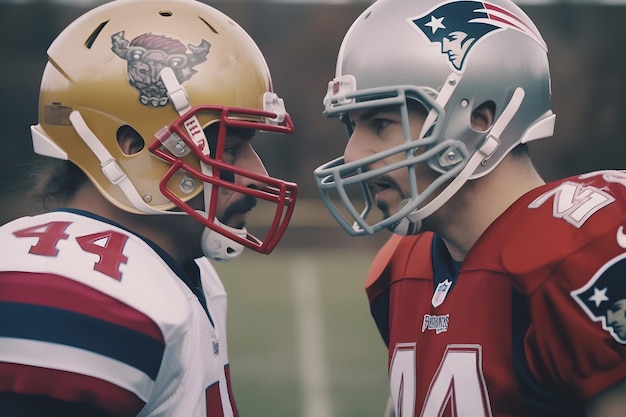Understanding the First Pick Draft Game
Anúncios
The first pick draft game holds a pivotal place in the landscape of the NFL. Established in 1936, this annual event marks the culmination of a season where teams assess college prospects and strategize for the upcoming year. The excitement surrounding the first pick stems from the profound impact it can have on a franchise’s future. Teams vie for the top selection to secure a player who promises to become a cornerstone for their organization.
Over the decades, the first pick draft game has evolved significantly, becoming a spectacle of athletic potential and strategic planning. The importance of this event cannot be overstated, as it represents a key opportunity for teams to alter their trajectory and build a competitive roster. The history of the draft is filled with dramatic turns, showcasing how one decision can resonate for years, shaping leagues and fan loyalty.
Anúncios
Each year, prospects engage in a high-stakes journey leading up to the draft, culminating in individual workouts and evaluations meant to showcase their talents. The first pick often focuses on quarterbacks, as they are seen as the lifeblood of a team. Nevertheless, teams occasionally divert from conventional wisdom, selecting unexpected positions that could redefine their gameplay and future.
Ultimately, the first pick draft game functions not only as a pivotal selection process but also as a cultural phenomenon, generating immense public interest. It brings together fans, analysts, and coaches in anticipation of which young athlete will transform their franchise’s fortunes. As the digital age progresses, the additional complexities surrounding scouting and analytics prove that this event will only intensify in significance.
Top NFL Draft Prospects
As the NFL Draft approaches, the excitement builds around the top prospects who could potentially change the trajectory of a franchise. Among these players, several stand out as potential first picks, each bringing unique skills and attributes that could fit seamlessly into a team’s strategy. For instance, quarterback Caleb Williams is a standout candidate, showcasing elite arm strength and exceptional playmaking abilities. His versatility on the field makes him an ideal fit for any offense looking to elevate its game.
Anúncios
Another contender is wide receiver Marvin Harrison Jr., whose route-running precision and athleticism set him apart from his peers. His ability to make contested catches could provide a substantial boost to any team’s aerial attack, addressing the need for a reliable target downfield. Teams in search of a playmaker will undoubtedly have their eyes on him.
Defensively, linebacker Dallas Turner showcases the potential to dominate at the next level. His speed and instinctive play make him not only a formidable tackler but also a disruptive presence in opposing backfields. Turner could immediately upgrade a team’s defense, causing chaos for quarterbacks and ball carriers alike.
Ultimately, the choice for the first pick in the draft will hinge on not just talent, but also the team’s strategic needs. Evaluating how each prospect complements existing rosters will be essential for maximizing their potential and making a significant impact in the NFL.
Strategies for a Winning First Pick

Making the first pick in the NFL Draft is a pivotal moment that can significantly alter a franchise’s trajectory. Teams must carefully assess their positional needs and long-term strategies when deciding who to select. Evaluating the strengths and weaknesses of their current roster is crucial; a team lacking a dynamic quarterback may prioritize drafting a top-rated QB prospect, while a squad rich in talent might opt for the best available player, regardless of position.
Additionally, exploring trade options can yield considerable benefits. If a team finds the top picks aligned with their needs and exemplifies high trade value, moving down the draft board can allow for additional assets. This strategy requires a deep understanding of both their own needs and the desires of other teams, engaging in comprehensive negotiations to secure a deal that positions them advantageously.
Ultimately, teams must balance their immediate needs with future potential. Selecting a player with a high ceiling or opting for a proven talent depends on the team’s overall strategy. Adapting to the demands of the first pick draft game means embracing uncertainty and leveraging every possible insight, ensuring they make a choice that will benefit their franchise for years to come.
Inspiring Thought
“Success is where preparation and opportunity meet.” – Bobby Unseld
This quote beautifully encapsulates the essence of the NFL Draft process. For teams, the draft is not merely about selecting raw talent; it’s about being prepared—understanding their own dynamics, evaluating potential players thoroughly, and recognizing when opportunity knocks. Just as in life, when we leverage our preparedness with the right opportunities, we pave the way for extraordinary success. As you reflect on the draft strategies discussed, remember that every decision holds the power to shape a future filled with potential.
Impact of the First Pick on NFL Teams
Fan Perspectives on the First Pick Draft Game
Moreover, fans are increasingly vocal about the role of team management in shaping the future. Loyalty to their teams often transforms into deep-seated expectations for the chosen rookie, which can amplify the pressure on both the organization and the player. As excitement swells, many also reflect on past draft choices—either celebrated or criticized—as they speculate on how the first pick might redefine their team’s trajectory. The insights gleaned from fan discussions are a testament to the passionate culture surrounding the NFL draft, creating a compelling narrative that underscores the significance of the first pick draft game.
Watch the Excitement Build: NFL Draft Highlights
Get a closer look at the electrifying moments leading up to the NFL draft with this engaging highlight video.